War of Canudos
| War of Canudos | |||||||
|---|---|---|---|---|---|---|---|
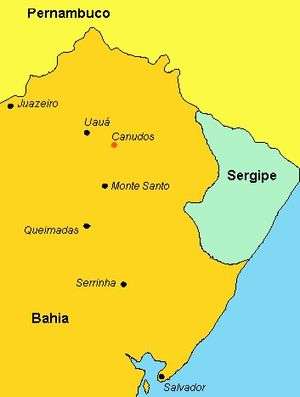 Map of northern Bahia, showing the location of Canudos | |||||||
| |||||||
| Belligerents | |||||||
| Commanders and leaders | |||||||
|
|
| ||||||
| Strength | |||||||
| 12,000 military personnel | 25,000 | ||||||
| Casualties and losses | |||||||
| less than 5,000 dead | almost 25,000 dead; only some 150 survivors | ||||||
The War of Canudos (Guerra de Canudos, Portuguese pronunciation: [ˈɡɛʁɐ duʃ kɐˈnuduʃ], 1895–1898)[1] was a conflict between the state of Brazil and some 30,000 settlers who had founded a community named Canudos in the northeastern state of Bahia. After a number of unsuccessful attempts at military suppression, it came to a brutal end in October 1897, when a large Brazilian army force overran the village and killed nearly all the inhabitants. This was the deadliest civil war in Brazilian history.[1]
The setting
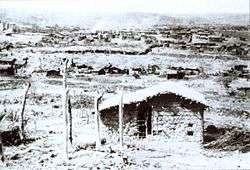
The conflict had its origins in the settlement of Canudos (named by its inhabitants Belo Monte meaning "Beautiful Hill," in the semi-arid backlands (sertão or caatinga, in Portuguese) in the northeast tip of the state (then province) of Bahia. At this time, Bahia was a desperately poor zone with a depressed economy based on subsistence agriculture and cattle raising. It was without large cities and the disenfranchised population was composed largely of white Brazilians and mestizos. It was a fertile background for dissatisfaction with the new republic, declared November 15, 1889 after a military coup against the ruling Emperor, Dom Pedro II, who was still beloved by the common people.
Into this scenario appeared one of the many mystic spiritual preachers of the time, Antônio Conselheiro ("Antônio, the Counselor"), who went from village to village with his followers, doing small jobs and demanding support from small farmers. He claimed to be a prophet and predicted the return of the legendary Portuguese king Sebastian of Portugal. After wandering through the provinces of Ceará, Pernambuco, Sergipe and Bahia, he decided in 1893 to settle permanently with his many followers, of which there were now a great number, in the farming community of Canudos, near Monte Santo, Bahia on the Vaza-Barris River. Soon his preaching and promises of a better world attracted almost 8,000 new residents. Fearing an invasion by the "Conselhistas", who had a dispute with a lumber merchant, the mayor of Juazeiro appealed to the provincial government. A visit by two Capuchin friars to Canudos was not enough to calm the population; one of them mistakenly accused Antônio Conselheiro of trying to raise a monarchist sedition.

Initial military campaigns
The provincial government dispatched Captain Virgílio Pereira de Almeida with 30 men to crush the settlement, resulting in the soldiers' annihilation by a band of “jagunços”, armed hired workers sympathetic to Antônio Conselheiro. The provincial government, alarmed, asked the federal government for help. The United States of Brazil had only recently been founded, and it saw the rebel settlers as monarchists, separatists, a bad example and a threat to the new regime.
President Prudente de Morais sent a punitive military expedition and the Brazilian Army began to prepare in November 1896. With scant information about terrain and the size and defensive resources of Canudo’s population, a small, 104-man force commanded by Lieutenant Pires Ferreira attacked the settlement on November 21, 1896. It was fiercely defended, however, by a band of 500 armed men, shouting praises to Antonio Conselheiro and the monarchy. The Brazilian soldiers retreated after incurring severe losses and killing 150 settlers, many armed only with machetes, primitive lances and axes.
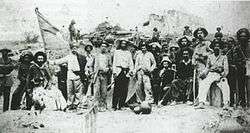
The defeat of the Pires Ferreira campaign and the sensationalist reports about the ferocity and fanaticism of Canudos’ inhabitants provoked an outcry, and calls for reprisals against the village, which was growing by leaps and bounds and eventually reached 30,000 residents. A second expedition, under Minister of War General Francisco de Paula Argolo, consisted of 557 soldiers and officers under Major Febrônio de Brito. It attacked the well-defended village on January 6, 1897. After some initial success with the infantry and artillery against the villagers' trenches, however, the soldiers were surrounded by more than 4,000 insurrectionists. Lacking ammunition, food and water, and unable to resist the rebels, who continued to fight despite heavy losses, the soldiers retreated once again.
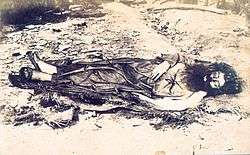
The Army sent a still larger expeditionary force, since the prestige of the armed forces and the new government were now at stake. An experienced colonel, Antônio Moreira César, set out with three infantry battalions, one cavalry and one artillery battalion, all newly armed and trained. Although forewarned about the numbers and resolve of the rebels, the military thought it impossible that the rebels would resist such a strong regular army force. But on March 6, 1897, they defeated Moreira César’s column after two days of fighting, resulting in further great loss of men and equipment among for the Brazilian forces, including Moreira César.
The final destruction of Canudos

Pressured, the Federal government sent a new expedition under General Arthur Oscar de Andrade Guimarães, and with the direct involvement of the Minister of War, who personally visited Monte Santo, a city near Canudos which served as the gathering point for the large army force being assembled, consisting of three brigades, eight infantry battalions and two artillery battalions. Machine guns and large artillery pieces, such as mortars and howitzers, including a powerful Whitworth 32 (nicknamed Matadeira (Killer)) went with the 3,000-man force, and had to be hauled with enormous effort through the unforgiving roadless landscape.
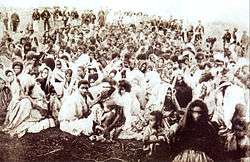
This time, the attackers were aided by rampant hunger and malnutrition among the inhabitants of Canudos, the rebels' lack of weapons and ammunition, and the heavy losses they had suffered in the previous attacks. Further, their spiritual leader and towering figurehead, Antonio Conselheiro, had died on September 22, probably of dysentery and malnutrition provoked by fasting for penance. Canudos was encircled and unmercifully bombarded day after day until the rebels were able to resist no further, and the end came on October 2, 1897. Atrocities were carried out against the civilian population, as slicing the throat of the men, and raping many women, leading to further massacres. When peace was restored, only 150 survivors remained. The best-looking surviving women were taken captive and sent to brothels in Salvador. Antônio Conselheiro's body was disinterred, and his head was cut off and taken triumphantly to the province's capital. According to Peter Robb (A Death in Brazil) it "was taken to the Medical Faculty of Bahia to be studied for abnormalities (Robb, 2004:208).

Some authors, such as Euclides da Cunha (1902) estimated the number of deaths in the War of Canudos was ca. 30,000 (25,000 residents and 5,000 attackers) , but the real number was probably lower (around 15,000, according to Levine, 1995). According to Peter Robb: "The foreign correspondents who covered what was soon being called the War of Canudos, as if it were a conflict between nations rather than the extermination of a tiny community within a single country, were nearly all embedded with the army of the Brazilian republic."(Robb, 2004:215). Euclides da Cunha did not see the fighting but did bear witness afterward, Robb says, and his "obsession with progress and modernity, the scientific racism that told him the people of the northeastern interior were doomed to backwardness by their mixed race" led him to tell a story filled with preconceptions, which is however, the only story we have.
Although the original town of Canudos has been covered by the reservoir of the Cocorobó Dam, built by the military regime in the 1960s, the Canudos State Park, established in 1986, preserves many of the important sites and serves as a monument to the war. The stated purpose of the park is to make it impossible to forget the martyrs led by Antônio Conselheiro.[2]
Bibliography
- Calasans, José. No Tempo de Antônio Conselheiro. Salvador, Livraria Progresso Editora, 1959.
- ARINOS, Afonso. Os Jagunços.
- Macedo Soares, Henrique Duque-Estrada de. A Guerra de Canudos.Rio de Janeiro: Typ. Altiva, 1902
- Benício, Manoel. O Rei dos Jagunços. Rio de Janeiro: Editora Fundação Getúlio Vargas. 2a. edição, 1997
- Levine, R.M. Vale of Tears: Revisiting the Canudos Massacre in Northeastern Brazil, 1893–1897. University of California Press, 1995. ISBN 0-520-20343-7. Review.
- Vargas Llosa, Mario. The War of the End of the World. Translated from Spanish La guerra del fin del mundo. Penguin, 1997, ISBN 0-14-026260-1.
- Cunha, Euclides da. Rebellion in the Backlands. Translated from Portuguese Os Sertões. University Of Chicago Press, 1957. ISBN 0-226-12444-4.
- Peter Robb, A Death in Brazil, 2004, Picador, NY, ISBN 978-0-312-42487-9
Media
- Guerra de Canudos (The Battle of Canudos). Motion picture directed by Sérgio Rezende, with José Wilker, Cláudia Abreu, Paulo Betti, and Marieta Severo. Brazil, 1997. IMDB record
- Sobreviventes – Os Filhos da Guerra de Canudos (Survivors, the Children of the War of Canudos). Documentary film by Paulo Fontenelle, Brazil, 2007.
- Canudos. Documentary film by Ipojuca Pontes, with Walmor Chagas, Brazil, 1978. IMDB record.
- War of Canudos in Brazil. Documentary radio broadcast, BBC World Service. Mon 9 Jun 2014 07:50 GMT. BBC iPlayer
See also
References
- 1 2 Timeline of Brazil's History
- ↑ Neto, Ricardo Bonalume (14 June 1997), "Inaugurado parque estadual de Canudos", Folha de S.Paulo (in Portuguese), retrieved 2016-11-04
| Wikimedia Commons has media related to Guerra de Canudos. |